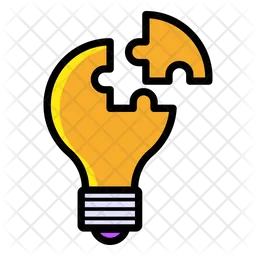PROBLEM: A Step-by-Step Guide to Effective Problem Solving
PROBLEM: A Step-by-Step Guide to Effective Problem Solving
3/31/20242 min read
In the journey of life, we encounter countless challenges and obstacles that demand our attention and resolution. Whether it's in our personal lives, careers, or society as a whole, problem-solving skills are invaluable assets. But how do we approach these challenges systematically? How do we navigate through the maze of complexities and uncertainties? The answer lies in a structured approach encapsulated within the acronym PROBLEM.
Perceive the Problem:
The first step in solving any problem is to perceive it clearly. Often, we tend to overlook or downplay the significance of a problem, which can hinder our ability to address it effectively. Take the time to observe, listen, and gather information about the issue at hand. Acknowledge its existence and understand its implications. Whether it's a disagreement with a colleague or a systemic issue in your community, recognizing the problem is the crucial first step towards finding a solution.
Realization of the Problem:
Once you've perceived the problem, the next step is to realize its impact. This involves acknowledging your role, responsibility, or contribution to the problem. It requires introspection and humility to recognize that you may be part of the problem, directly or indirectly. Avoid the temptation to deflect blame or make excuses. Instead, confront the reality of the situation and accept accountability. Realization is the gateway to growth and progress.
Objective Analysis:
With a clear perception and realization of the problem, it's time to analyze it objectively. This means stepping back from your emotions and biases and examining the problem from all angles. Break it down into its component parts, identify root causes, and consider alternative perspectives. Ask questions, gather data, and seek input from others. Objectivity fosters clarity of thought and helps in identifying viable solutions. Remember, the goal is not to assign blame but to understand the problem comprehensively.
Take Action:
Armed with a thorough understanding of the problem, it's time to take decisive action. This may involve implementing solutions, making difficult decisions, or initiating change. Be proactive and strategic in your approach, considering both short-term fixes and long-term implications. Collaborate with others, leverage resources, and stay focused on the desired outcome. Taking action demonstrates your commitment to resolving the problem and moving forward.
Measure Your Action:
As you implement solutions and make progress towards resolving the problem, it's essential to measure your actions' effectiveness. Monitor outcomes, track metrics, and evaluate results against predefined objectives. Be willing to adapt and iterate based on feedback and new information. Continuous measurement ensures that you stay on course and make necessary adjustments along the way. Remember, solving a problem is not a one-time event but an ongoing process of improvement.
Beginning Anew:
Finally, as you navigate through the stages of problem-solving, it's important to recognize that every resolution is also a new beginning. Learn from the experience, celebrate successes, and reflect on lessons learned. Embrace a mindset of continuous learning and growth, knowing that each problem solved strengthens your abilities and resilience. Approach each new challenge with confidence and determination, knowing that you have the tools and mindset to overcome it. Back to beginning.
In conclusion, effective problem-solving requires a structured approach that encompasses perception, realization, objectivity, action, measurement, and renewal. By following the PROBLEM framework, you can navigate through challenges with clarity, purpose, and resilience. Embrace each problem as an opportunity for growth and transformation, knowing that your ability to solve problems is key to success in all aspects of life.


Contacts
Socials
Subscribe to our newsletter
When local number is at hand
